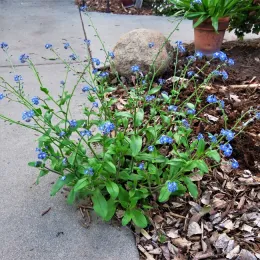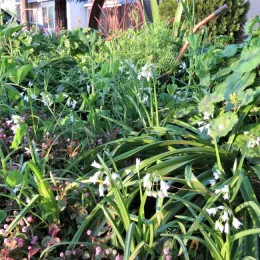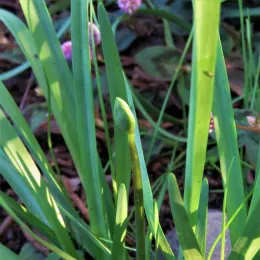
The Master Garden handbook defines a weed as “a plant growing where it is not wanted.” For the home gardener, a plant can become a weed when it interferes with intended use of land and water resources.
I recently purchased “Weeds of California and other Western States” a two-volume resource book. It lists over 1600 pages of plants considered weeds. As I read through this book, I see many plants listed that I would not have considered as weeds, such as the broadleaf forget-me-not. I love the look of this annual. I scattered their seeds several years ago in one area of my yard and this year I found them growing in several other places. This isn't surprising as I've observed their seeds attached to my clothes and garden gloves.

So, is it a weed if this pretty flower shows up somewhere else? According to the California Invasive Plant Council, the answer is “yes,” since this particular plant is also considered invasive. It can escape landscapes and move into natural habitats and pastures. The control of invasive plants in California costs over $82 million dollars per year.
Nostalgic Weeds
One “weed” I enjoy came from my grandmother's garden, it's called the “three-corner leek”. This “weed” looked so pretty in her yard, I brought it home many years ago. Now, I see it made itself comfortable all over the yard. This perennial bulb, with white umbel-like flowers, has “escaped cultivation as a garden ornamental”, according to the “Weeds” book. It has been somewhat easy to control, and I dig out the bulb when it appears. I think of Grandma when I see it, so in the garden, it's staying.
A Weedy Menace

I am slowly winning the fight in two areas where these weeds are located. However, under the birch trees, I have surrendered to taking my garden knife and cutting off the greens just below the surface of the ground. I know it may not be a permanent solution, but it looks good until I need to cut the greens again, in a few weeks. The “Weeds” book says this process eventually “depletes bulb energy reserves.” I have learned not to let this plant set flowers as it also reproduces itself using seeds.
I am determined to win this battle against the weeds with perseverance. Wish me luck!!! I hope to see your comments on how you are doing controlling weeds in your garden.

UC IPM Home and Landscape Pests - Weeds
http://ipm.ucanr.edu/PMG/menu.weeds.html
California Invasive Plant Council
https://www.cal-ipc.org/
Weeds of California and Other Western States, vol. 1&2, UC ANR publication 3488
http://anrcatalog.ucdavis.edu
For more information about Stanislaus Master Gardener's program and upcoming classes, sign up for the Stanislaus Sprout blog at https://ucanr.edu/blogs/StanislausSprout
A Help Desk is also available to help with other gardening questions or concerns: https://ucanr.edu/sites/stancountymg/
Heidi Aufdermaur is a graduate of the 2019 Class of Master Gardeners in Stanislaus County.
